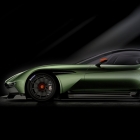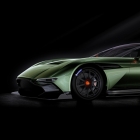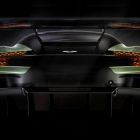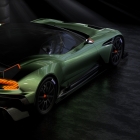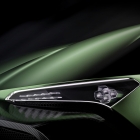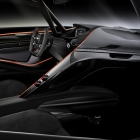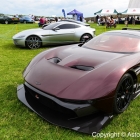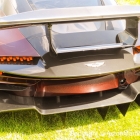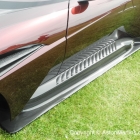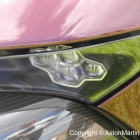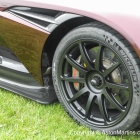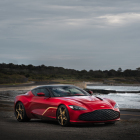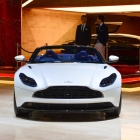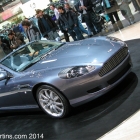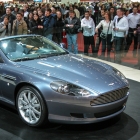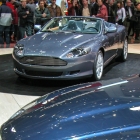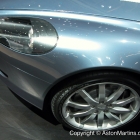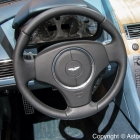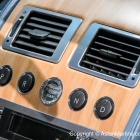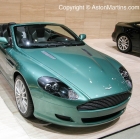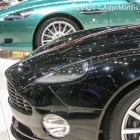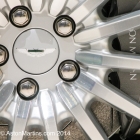The DB9 Volante shared the same mechanical specification as the coupe but was regarded as a cruiser rather than and out-and-out sportscar and thus the suspension was made softer than its coupe counterpart.Performance was very close to that of the coupe as the open car weighed in at only about 100kg more at 1815kg for the manual and 1855kg for the Touchtronic 2. The 0-60 time was a claimed to be an impressive 4.9 seconds but the top speed of the Volante was electronically limited to 165mph until the introduction of the 2006.5MY car when this was increased to 186mph.
The electrically folding roof of the DB9 Volante was of the standard mohair fabric type – the fashion for a folding steel roof wasn’t followed as it would have eaten greatly into the boot space and increased weight. Indeed the packaging of the roof allowed the Volante almost as much boot space as the coupe and a useful increase over the pervious DB7 Volante. But unlike all previous Volantes, the roof folded fully in 17 seconds and stored neatly under a hard tonneau cover. In the event of a potential roll-over, special tilt sensors detected the danger and hoops could be rapidly deployed from the rear head restraints. If the roof was erected at the time – the hoops were designed to ‘punch’ through the rear window glass. Further safety protection was offered by the windscreen A-pillars, which were able to withstand more than twice the total weight of the car.
Like the DB9 Coupe, power for the Volante was supplied by Aston Martin’s low emissions, all-alloy, 48-valve, 5.9-litre, V12 engine, manufactured by skilled Aston Martin technicians at the company’s dedicated engine plant in Germany. Also in line with the DB9 Coupe, the DB9 Volante was available with a six-speed paddle shift automatic (Touchtronic 2) or rarely, the six-speed manual transmission.
The images above were taken at the European debut of the Volante at the Geneva Salon, March 2004. This particular example previewed the unusual new Bamboo wood interior which was a great choice in the open car.
The production DB9 Volante made its European debut at the 2005 Geneva Motor Show. The AM Racing Green example featured the optional new 15 spoke diamond turned wheel, Parliament Green leather, Touchtronic 2 transmission and walnut facia.
During the production of the DB7, open versions have accounted for almost half of total production and trend continued with the DB9. Production of the Volante began in early 2005 at a rate of around 1000 examples a year with an introductory price of £112,000 (manual) and £115,000 (Touchtronic 2). The manual DB9 Volante is an extremely rare car and are highly sought after by keen enthusiasts.


